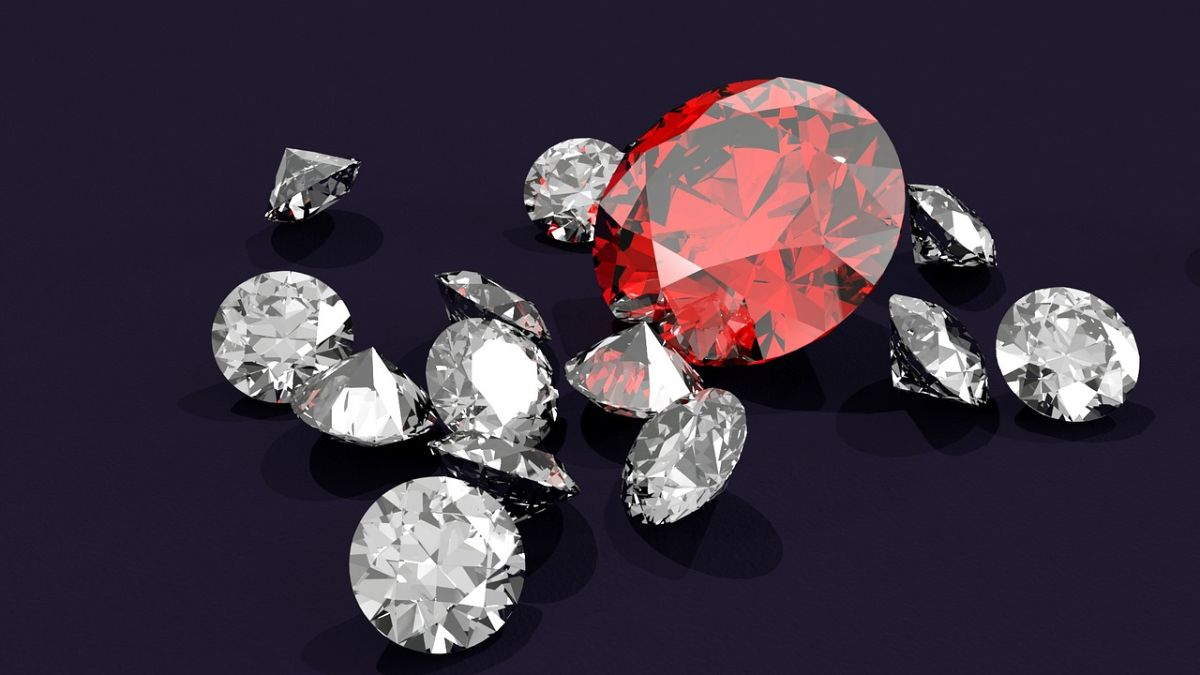Diamonds, the epitome of brilliance and luxury, have captivated humanity for centuries. But beyond their dazzling beauty lies a story forged under immense pressure and heat, deep within the Earth. This article delves into ten fascinating facts about diamonds, revealing their remarkable journey from formation to becoming treasured gemstones.
Forged in the Earth’s Mantle
Diamonds are not formed from coal, as once believed. Instead, they originate approximately 100 to 160 miles beneath the Earth’s surface, within the scorching mantle. Here, amidst intense heat (around 1,650 degrees Fahrenheit) and unimaginable pressure (exceeding 50,000 atmospheres), pure carbon atoms bond in a unique crystal structure, giving rise to the hardest natural substance known.
A Volcanic Journey to the Surface
Diamonds can remain trapped for millions of years in the Earth’s mantle. However, some are carried upwards by violent volcanic eruptions. Molten rock, or kimberlite, rises through the Earth’s crust, carrying the diamonds along with it. When the kimberlite cools and solidifies, it forms kimberlite pipes, which become the primary source for diamond mining.

Industrial Uses of Diamonds
While diamonds are coveted for their brilliance, their exceptional hardness makes them invaluable for industrial applications. Diamond dust, consisting of crushed industrial-grade diamonds, is used in saw blades, grinding wheels, and drill bits for cutting and polishing other extremely hard materials. Diamonds are also employed in medical scalpels and other surgical tools due to their precise cutting ability and resistance to wear.
Only a Fraction Make it as Gems
It’s estimated that only about 30% of mined diamonds possess the clarity, color, and cut necessary to be classified as gem-quality diamonds suitable for jewelry. The remaining 70% are categorized as industrial diamonds. The rarity of gem-quality diamonds further adds to their value and allure.
A Timeless Allure
The history of diamonds stretches back millennia. Ancient civilizations in India, dating back to 4th century BC, were among the first to recognize and utilize diamonds. They were initially valued for their industrial applications, but their beauty was soon appreciated. Over time, diamonds became associated with wealth, power, and eternal love, solidifying their place as prized possessions.

The Spectrum of Diamond Colors
While white diamonds are the most common and commercially desired, diamonds can occur in a vast array of colors. These colors arise from the presence of trace impurities during diamond formation. Yellow diamonds, for instance, contain nitrogen atoms, while the presence of boron lends a blue hue. Fancy colored diamonds, such as vibrant pinks, reds, and blues, are exceptionally rare and highly valuable.
The Cullinan
The largest rough diamond ever discovered was the Cullinan Diamond, unearthed in South Africa in 1905. This awe-inspiring gem weighed an astounding 3,106 carats (over 1.3 pounds). It was purchased by the Transvaal Colony government and presented to King Edward VII of England. The Cullinan was later cut into nine large stones and over 90 smaller diamonds, which became part of the British Crown Jewels.
A Glimmer Beyond Reflection
Diamonds can exhibit unique light-related properties. Fluorescence is the emission of visible light by a diamond when exposed to ultraviolet radiation. The emitted light can range from blue to white, adding brilliance to the stone under certain lighting conditions. Phosphorescence, on the other hand, is the ability of a diamond to continue emitting light for a short time after the UV source is removed. While not as common as fluorescence, phosphorescence can create an enchanting afterglow effect.

Synthetic Diamonds
Technological advancements have led to the creation of synthetic diamonds. These lab-grown diamonds possess the same physical and chemical properties as mined diamonds. The process involves replicating the extreme conditions of heat and pressure found deep within the Earth, but within a controlled laboratory environment. Synthetic diamonds offer an ethical and sustainable alternative to mined diamonds, while maintaining the brilliance and beauty associated with these precious stones.
Diamond Rain on Distant Worlds
Diamonds are not confined to Earth. Astronomers have discovered evidence of diamond rain on distant planets like Jupiter and Uranus. The immense pressure and scorching temperatures within these gas giants are believed to convert atmospheric methane into diamonds, which then rain down towards the planets’ cores. While directly observing this phenomenon remains a scientific challenge, the presence of diamond rain adds another layer to the fascinating story of these remarkable gems.
Diamonds are more than just dazzling stones; they are a testament to the Earth’s powerful geological forces and a window into the universe’s wonders. From their formation deep within the Earth to their potential existence on distant planets, diamonds continue to spark our curiosity and capture our imagination.










